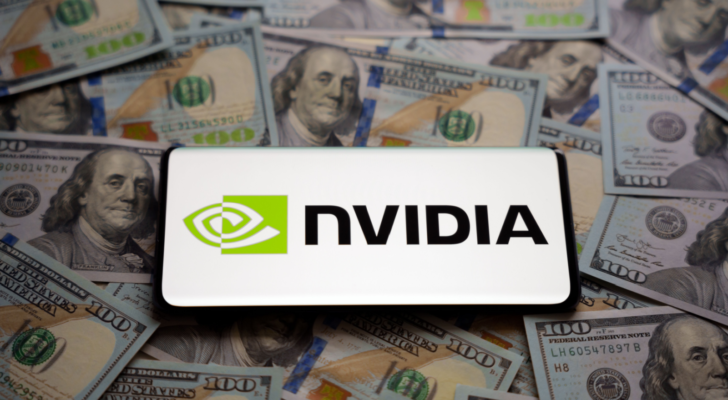7 Stocks That Are Making Other CEOs Lose Sleep at Night
There are seven stocks making CEOs lose sleep in March this year, reflecting the immense pressures and challenges facing major corporations across various industries.
Some companies are reeling from product safety crises that have shaken consumer confidence while exposing them to staggering litigation risks. Others are struggling with internal culture issues, while more are being left behind in the wake of disruptive companies.
The stocks making CEOs lose sleep discussed in this article are all carving out formidable positions in the market that their competitors envy. I believe that investing in these companies could lead to outsized returns when compared with the potential of the S&P 500 or even the Nasdaq, making them potent choices.
InvestorPlace - Stock Market News, Stock Advice & Trading Tips
It’s hard to know whether the advantages of these companies will stick, or if the pendulum will swing in favor of their competitors. But the size and strength of the moats of these businesses is robust, and I think there’s a good chance that it will last for the long run.
So here are seven stocks making CEOs lose sleep for investors to consider for March this year.
Microsoft (MSFT)

Source: The Art of Pics / Shutterstock.com
Microsoft (NASDAQ:MSFT) with its investment in OpenAI and rolling out generative AI in its products has left its competitors such as Alphabet (NASDAQ:GOOG, NASDAQ:GOOGL) blindsided and playing catch up.
I feel that MSFT will continue its dominance in the AI arena, and that the best is yet to come for this Majestic Seven stock.
Furthermore, the gaming sector presents a substantial growth opportunity, with forecasts suggesting the market could grow to over $655 billion by 2030. Microsoft aims for its gaming revenue to reach $36 billion by 2030, buoyed by its acquisition of Activision Blizzard. This will pressure the management teams of smaller gaming companies.
I also feel that the company’s remote work solutions, particularly Microsoft Teams, SharePoint, and Microsoft 365, are expected to continue benefiting from the ongoing trend towards remote work, which puts the heat on platforms such as Discord and Google Docs to retain their users.
Texas Instruments (TXN)

Source: Katherine Welles / Shutterstock.com
Texas Instruments (NASDAQ:TXN) dominates the analog semiconductor market. I feel that TXN’s dominance in this industry will continue, as evidenced by substantial capital expenditures ($5 billion annually through 2026) to support long-term growth and market share gains.
TXN’s management also remains committed to long-term growth targets, supported by an estimated growth Compound Annual Growth Rate (CAGR) of 7.61% for the analog semiconductor industry, where TXN continues to hold a leading market share.
It’s TXN’s sheer size and position in the market that I feel gives it a dominance over smaller firms, and also make it harder for entrants to disrupt its plans. With revenues of around $4 billion being reported last quarter, I don’t see its position being eroded any time on soon, and its plans to improve utilization rates only make it an even better pick.
TXN’s case is furthered improved by its now cheaper valuation, having dropped around 3% over the past year, giving investors an extra incentive to buy shares.
Intuitive Surgical (ISRG)

Source: Sundry Photography / Shutterstock.com
Intuitive Surgical (NASDAQ:ISRG) is a pioneer in robotic-assisted surgeries, notably through its da Vinci surgical systems. The company has a very strong position in the robotics surgery market and is currently the undisputed leader. Its dominance in this industry means that alternatives such as Johnson & Johnson’s (NYSE:JNJ) Ottava surgical robot will have a very difficult time taking market share from ISRG.
Surgical robots are costly, running from around a few million dollars apiece. But it’s not just the capital outlay that strengthen’s ISRG’s position. It’s the training needed to be done for surgeons, maintenance, setup, and other training for medical staff that gives ISRG an entrenched advantage.
Looking ahead, ISRG is planning the launch of the da Vinci 5 system, pending FDA clearance. The launch will be phased over several quarters, impacting total trading volumes and system placements in 2024, expected to be lower than in 2023. Still, the company expects a procedure growth rate of 13% to 16% in 2024, and ISRG could be one of the prime beneficiaries of this.
Nvidia (NVDA)

Source: Ascannio / Shutterstock.com
Nvidia (NASDAQ:NVDA) has become a pivotal player in AI and computing with its advanced graphics processing units (GPUs). Its products are essential for a multitude of AI applications, including self-driving cars and cloud computing.
NVDA has its tentacles in many industries, disrupting and shaping them as it sees fit. Not only is it sucking up investors’ dollars, having reached a $2.2 trillion market cap at the time of writing, it’s also in an extremely dominant position as one of the key chip makers, which is undoubtedly making the management teams of other firms lose sleep over its sheer presence.
There’s some evidence that NVDA’s position will only improve this year. Notably, Meta Platforms (NASDAQ:META) plans to have nearly 600,000 Nvidia GPUs by the end of 2024. This demand is part of Meta’s strategy to build massive compute infrastructure for future AI developments, and could lead the way for other brands to follow suit if they have AI ambitions.
UiPath (PATH)

Source: dennizn / Shutterstock.com
UiPath (NYSE:PATH) specializes in robotic process automation (RPA), allowing businesses to automate repetitive tasks without coding skills.
PATH is one of those stocks that I think reminds us how vulnerable many of our jobs are to automation. The company will be making a stir in many recruitment spaces, but most notably its performance will be worrying to its peer companies that are attempting to sell the the same solutions.
Notably, PATH achieved GAAP profitability recently with Q4 revenue surging 31% year-over-year to $405 million. The full-year revenue was up 24% to $1.308 billion. The company’s gross margin stood impressively at 87% for Q4, with a full-year margin of 85%.
Meanwhile, the brand’s partner, FedResults, was awarded a U.S. Department of Defense Enterprise Software Initiative Agreement, potentially worth up to $95 million. This agreement facilitates the adoption of UiPath’s products and services by the DoD, Intelligence Community, and U.S. Coast Guard.
PATH could be worrying to its peers as it’s carving out a strong first-mover advantage that will be difficult to match by subsequent newcomers.
Canoo (GOEV)

Source: Shutterstock
Canoo (NASDAQ:GOEV) aims to disrupt the EV market with a subscription-based vehicle access model, eliminating long-term commitments.
I like GOEV’s business model a lot. It disrupts the automotive industry in a way that makes EVs affordable for people who prefer to own by subscription than buying outright, and if it successfully catches on, could pose a threat to companies such as Tesla (NASDAQ:TSLA) and other premium EV manufacturers.
There’s some evidence that GOEV’s approach is catching on. The company reported an improvement in its financial performance for Q3 2023 compared to the same period last year, with a GAAP net loss of $112.0 million, better than the $117.7 million loss in Q3 2022. Their adjusted EBITDA loss of $40.4 million for the quarter also showed significant improvement from the $80.8 million loss in Q3 2022.
Analysts have also set some very bullish top-line forecasts for the company this year. This optimism is reflected in Canoo’s forecast annual revenue growth rate of 1,295.92% for 2024, far surpassing the U.S. Auto Manufacturers industry’s average forecast growth rate of 40.2% and the U.S. market’s average forecast growth rate of 10.67%.
Palantir (PLTR)

Source: Mamun sheikh K / Shutterstock.com
Palantir (NYSE:PLTR), with its focus on data analytics and AI, provides critical insights for defense and commercial sectors.
PLTR is often referred to as one of the top AI stocks for investors to buy if they want pure-play exposure to the industry.
I think that this crown is worthy for PLTR to hold, as it is gearing up for a promising 2024, leveraging its strong position in the AI market, with guidance indicating a revenue range of $2.652 billion to $2.668 billion, surpassing analysts’ expectations. This growth is underpinned by its accelerating commercial business and strategic moves like the AIP Bootcamps, designed to shorten the times to conversion and expansion for larger deals.
The strength of PLTR’s brand though and where it causes other CEOs to lose sleep is the fact that the AI market, where PLTR operates, is projected to surge from $96 billion in 2021 to $1.8 trillion by 2030, positioning PLTR to potentially capture a significant market share with its advanced software solutions.
On the date of publication, Matthew Farley did not have (either directly or indirectly) any positions in the securities mentioned in this article. The opinions expressed are those of the writer, subject to the InvestorPlace.com Publishing Guidelines.
Matthew started writing coverage of the financial markets during the crypto boom of 2017 and was also a team member of several fintech startups. He then started writing about Australian and U.S. equities for various publications. His work has appeared in MarketBeat, FXStreet, Cryptoslate, Seeking Alpha, and the New Scientist magazine, among others.
More From InvestorPlace
The #1 AI Investment Might Be This Company You’ve Never Heard Of
Musk’s “Project Omega” May Be Set to Mint New Millionaires. Here’s How to Get In.
It doesn’t matter if you have $500 or $5 million. Do this now.
The post 7 Stocks That Are Making Other CEOs Lose Sleep at Night appeared first on InvestorPlace.
